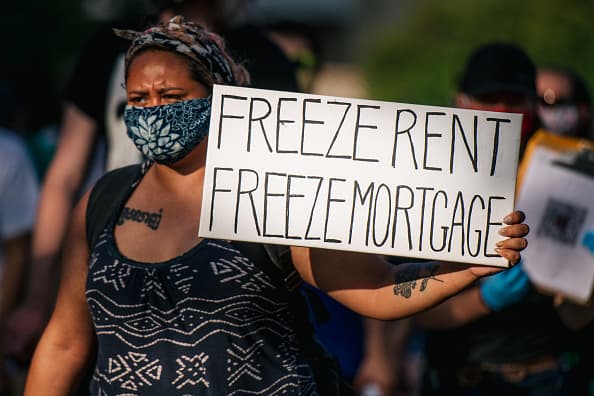The nation’s mortgage servicers are gearing up for the biggest wave of delinquent loans since the subprime mortgage crisis, but this time they say they are ready.
The first wave of borrowers to enter the government’s coronavirus mortgage bailout program are entering their last possible quarter for relief, which means that come September they will either have to start paying, sell their homes or go into foreclosure.
Mortgage bailout programs, both government and private sector, launched at the start of the Covid pandemic. The government originally allowed borrowers to delay their monthly payments for up to a year. That was then extended to 18 months. Each quarter, borrowers must re-up.
An estimated 7.25 million borrowers have participated in forbearance programs at one point or another throughout the pandemic, representing 14% of all homeowners with mortgages, according to Black Knight Financial Services. About 72% of all participants have since left their plans, while 28%, or just more than 2 million, remain in active forbearance.
This week and next, a total of more than 350,000 borrowers will be reviewed for extension or removal from forbearance, according to Black Knight. Of the 146,000 plans reviewed this week, 44,000 homeowners left forbearance, while the plans of 102,000 were extended. With roughly two-thirds of borrowers remaining in forbearance, Black Knight estimates that 575,000 plans will expire in September and the beginning of October, meaning mortgage servicers will be facing the daunting task of dealing with about 15,000 troubled loans per day.
“We all know what’s coming, and we’ve invested as well, and so I think from an industry perspective, we are, especially among the larger servicers, I think we’re definitely ready,” said Jay Bray, CEO of Mr. Cooper, the largest nonbank mortgage servicer in the nation.
At the start of the bailout, part of the CARES Act, Bray characterized the mortgage program as “complete chaos,” but now admits, “I was wrong.”
Bray credits the ramp up in new technology and streamlined procedures for the plan’s success.
“It was simple, easy, the customer experience, I think, was about as good as it can be. And then you look at the tools that you know, when you’re coming off forbearance, those are easy as well,” he said.
But Bray also said his company is adding staff to get ready for the onslaught and moving some staff from originations, which are currently weakening, to loss mitigation.
“It will be significant volume, but we are more than ready for that,” said Bray. “Working with all those folks and the stakeholders, I think we’ve got some great solutions.”
Fannie Mae, Freddie Mac and the FHA this week published new guidelines to help borrowers whose plans are expiring. Part of that includes more interest rate reduction in loan modifications to help keep borrowers in their homes.
“Allowing more families to qualify for an interest rate reduction will prevent unnecessary foreclosures, help strengthen the Enterprises’ books of business, and make sustainable homeownership a reality for more families currently living with the uncertainty of forbearance,” said acting FHFA Director Sandra Thompson.
Mortgage servicers in general want to keep as many borrowers in their homes as possible, since the foreclosure process is very expensive. They can perform loan modifications, lowering the interest rate, and can also tack on all the missed payments to the end of the loan. While there is a so-called waterfall of options, the final one is selling the home, which in today’s very pricey housing market, could even net some borrowers a small profit.
The CFPB also just changed its guidance for how servicers should handle borrowers when mortgage forbearance programs expire. Part of that is improving outreach from servicers as well as helping servicers process loan modifications and not pushing for a foreclosure moratorium.
“We also see as improved a change that permits servicers to approve a borrower for a modification even if they don’t have all the information back from the borrower,” wrote Jaret Seiberg, financial services and housing policy analyst at Cowen Washington Research Group. “This is key to quickly delivering relief. As the CFPB notes, as many as 3% of mortgage borrowers are at least four months behind. That means they could face foreclosure.”
While an improving economy should help more borrowers to become current again on their payments, no one denies there will be foreclosures in the fall and winter, as some troubled borrowers simply have no other recourse. While it is difficult to predict how many, it will be nothing like the crisis a decade ago when more than 11 million homes entered the foreclosure process.
“When you look at the tools that we have today, and the ease of coming off of forbearance plans, I think it’s just so much simpler than what we saw in the past,” said Bray.
